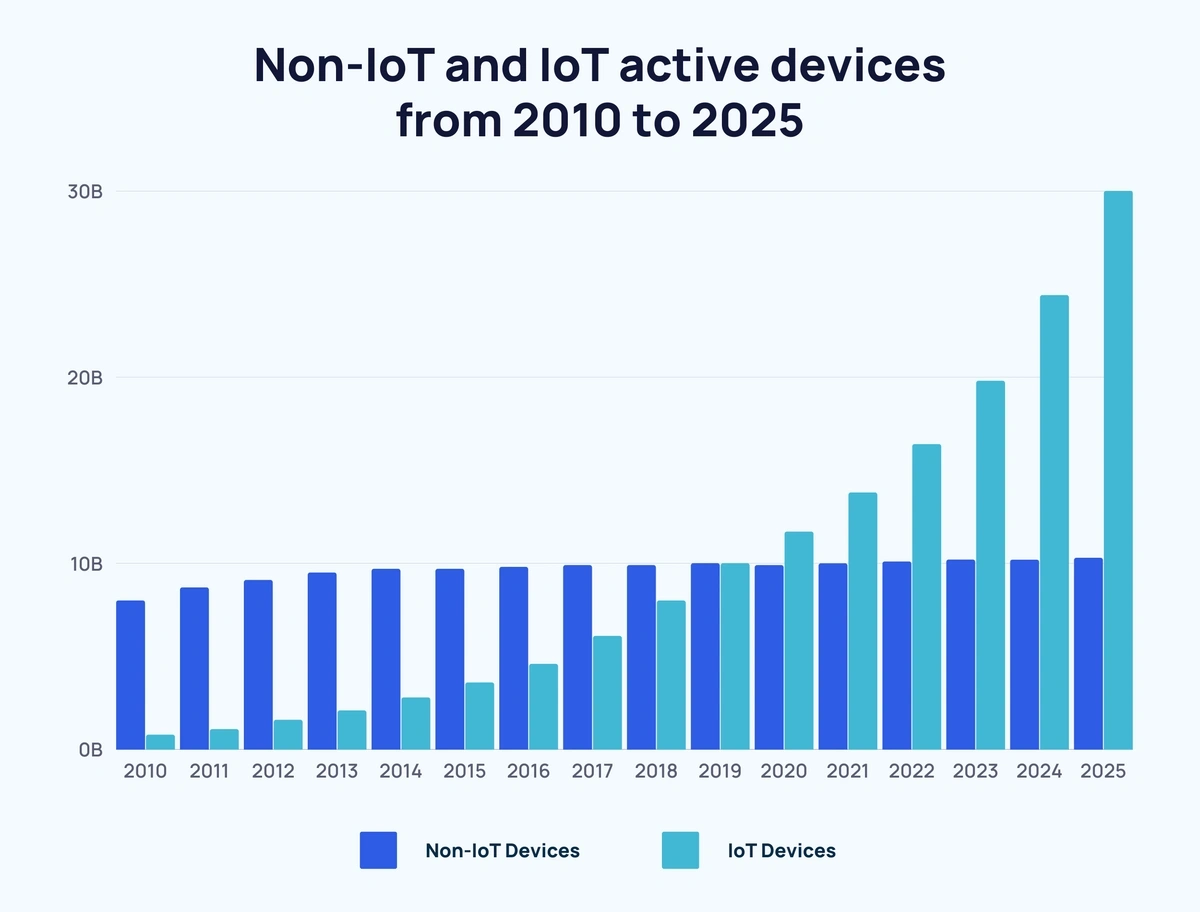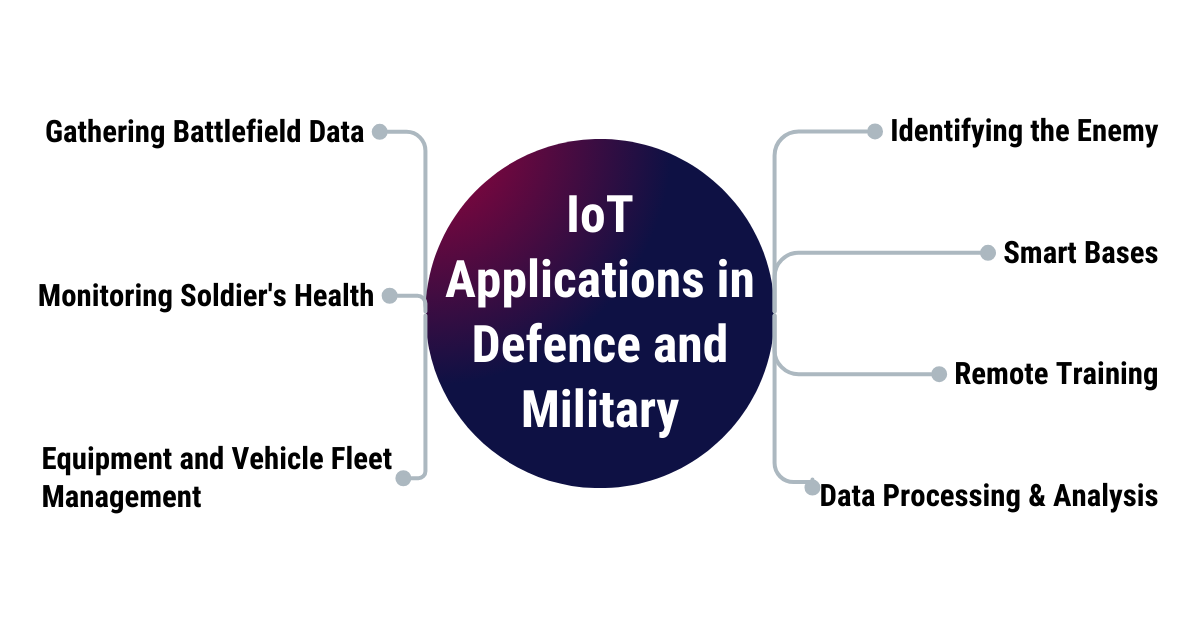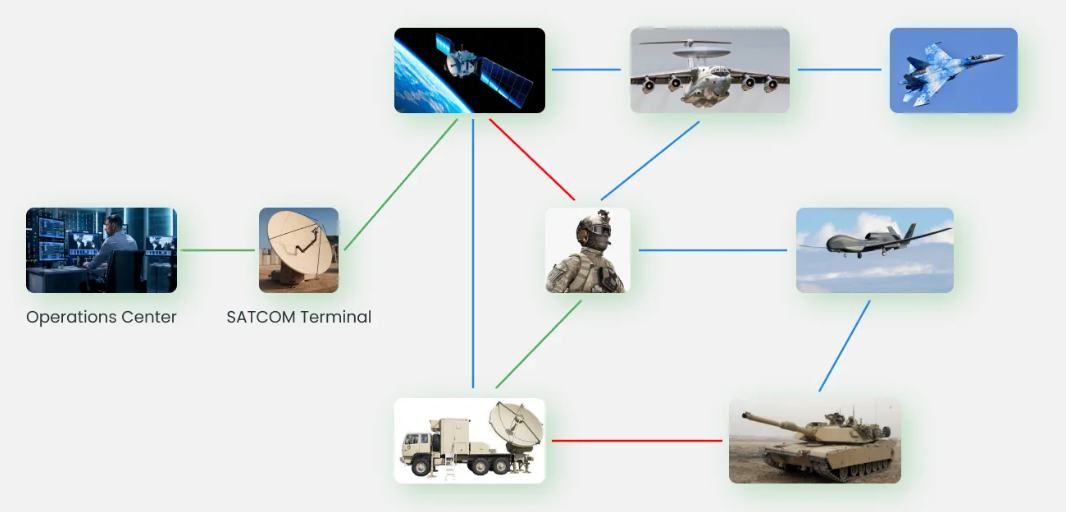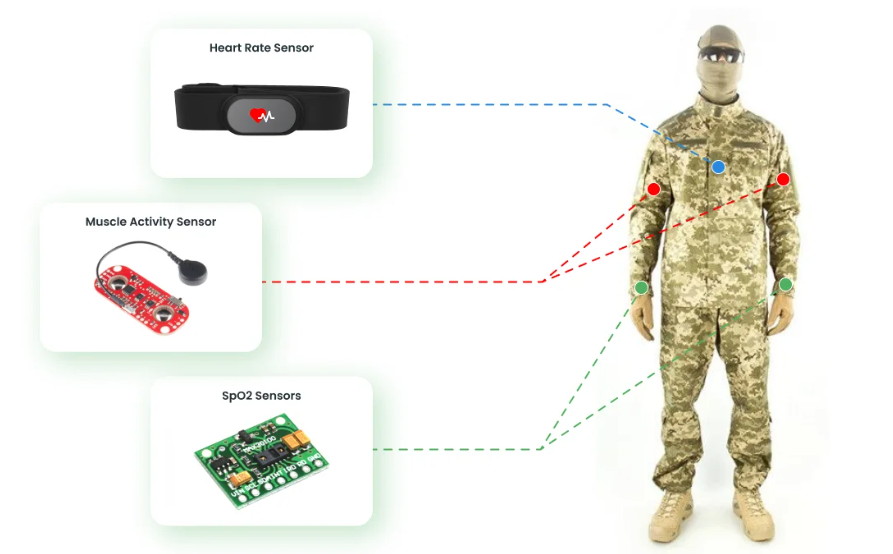Aug 22, 2024
insights,
tech
IoT: Arming the Modern Warrior
Internet of Things or IoT has an undeniable effect on many spheres of our lives. This could be fantastic smart homes or the efficiency of industrial automation. You may remember self-driving cars or think of smart thermostats.
However, there is one potential (and important) application not many think of. It is a military sector.
By sifting through the mountains of data, military technology could analyze and predict where the enemy moves and identify potential threats to soldiers. This could be particularly important for special operations forces, where every piece of intelligence can be a matter of life or death.
Read our blog post and find out:
- What’s IoT, and how does it work?
- Possibilities and prospects of IoT devices in the military sphere
- Groundbreaking IoT innovations for the battlefield
- Challenges and risks associated with IoT and artificial intelligence in a military context
Let’s start the ball rolling!
Understanding IoT

First things first. What’s IoT?
Put it simply, IoT is a network of interconnected devices that communicate and share data over the Internet. What's the effect? Increased automation. IoT has already changed almost every industry, from healthcare to manufacturing.
In 2025, the number of interconnected devices could reach 30.9 billion units. In 2021, the figure was only 13.8 billion. Actually, IoT devices have already surpassed non-IoT devices in 2020. So, the future definitely lies in digital technologies.
How does IoT work?
In the beginning, smart sensors collect information about themselves. Then, this data is sent to a big computer called an IoT platform. This computer stores all the information it gets from the sensors. The result is that we get a massive amount of real-time data that can be analyzed to find useful patterns and trends.
Of course, it may sound like a complex and overwhelming process. Still, with the right tools and expertise, this data can be transformed into valuable insights that drive innovation and efficiency.
Military AI enhances IoT; with its help, the whole system could become smarter and more efficient. Machine learning algorithms can identify patterns and predict potential outcomes. The combination of IoT connectivity, 5G networks for low latency communication, and robust cloud computing platforms provides the infrastructure for effectively handling and processing this data.

Now, let's delve into the concrete use cases and learn how IoT and military technology can benefit each other.
Possibilities and prospects of IoT in military sphere

The military sphere is not about ambiguity and uncertainty. The room for error is pretty small. The soldiers are in a harsh environment, and the choice is simple: win or lose. The more accurate and correct the decisions are, the higher the chances. Fact-based decisions, precision, clarity, and actionable intelligence can really help.
Now, let’s see IoT applications.
Improving Situational Awareness
Understanding what's happening around you in a given moment is particularly important in the military sphere. This includes potential threats, your own position, and the position of your allies. Other essential factors are weather conditions and the terrain.
Sensors play a crucial role in this case. By gathering information about the environment, soldiers can enhance situational awareness. Imagine a reconnaissance patrol operating in a dense jungle. This patrol does not have sensors, and the only thing it can do is rely on its senses and past experience. However, the tricky part is that the enemy could change a strategy.
Drones with smart sensors can detect enemy movements or even deliver critical supplies to troops in remote areas. With thermal imaging, AI-driven object recognition, and long-range communication capabilities, these drones can navigate challenging environments, avoiding obstacles and threats while ensuring that vital resources reach their destination.
Optimization of logistics and supply
IoT could help to optimize logistics and supply chain, which is important for tracking and managing supplies.
What is the most efficient way to distribute supplies and equipment among troops? How can we minimize logistical vulnerabilities to enemy attacks? These are important and sometimes mission-critical questions.
IoT sensors could inform about any delay, damage, or theft. Additionally, IoT data analytics is also deployed to deliver supplies directly to the front lines, even in hazardous conditions. Due to this fact, the risk of personnel attack is minimized.

Personalization of equipment
Not only sensors and drones are important for military operations. Each tiny detail matters. Even the soldier's gear, like backpacks and helmets with built-in sensor monitoring, can check hydration levels, fatigue, and even detect concussions or head injuries. Additionally, smart uniforms with integrated heating and cooling systems can optimize soldier comfort and performance in extreme environments.
From all the above we conclude that the outfit of the soldiers and their equipment can be customized to their specific role, needs, and preferences.

IoT and startups: Innovations for the military
IoT is reshaping the battlefield. But don’t take our word for granted. Let’s see the real-world impact through the lens of innovative startups.
Skydio
Skydio has rapidly emerged as a leader in autonomous drone technology. While primarily known for its consumer-focused drones, its core technology has immense potential for military applications.
Skydio's drones can navigate complex environments without relying on GPS or pre-programmed flight paths. Equipped with high-resolution cameras and sensors, Skydio drones can collect and transmit real-time data, providing critical intelligence for military decision-making.
Zipline
Zipline, renowned for its drone-based medical delivery services, possesses technology with significant military implications. Zipline's drones can autonomously deliver ammunition or medical supplies to remote locations, which could revolutionize military logistics.
Helsing
The company's technology can predict enemy movements, identify potential threats, and optimize troop deployment. The platform's predictive capabilities can anticipate enemy actions, allowing forces to preemptively position themselves for success.
Challenges and risks
Cybersecurity is an important issue in terms of the military industry.
The increasing reliance on digital systems and networks for command and control has significantly elevated the stakes. A successful cyberattack could compromise sensitive information, disrupt operations, or even cause physical harm.
What are the main dangers?
- Data breaches: Sensitive military information, including troop locations, weapon systems, and tactical plans, can be compromised.
- Denial of Service (DoS) attacks: Critical IoT devices can be rendered inoperable, disrupting operations.
- Man-in-the-middle attacks: Communication between IoT devices can be intercepted and manipulated
One of the examples of cyber-physical attacks is Stuxnet. While not a direct military attack, Stuxnet targeted Iran's nuclear program, demonstrating the potential for cyber-weapons to inflict significant physical damage on critical infrastructure.
The final word here is that IoT is a valuable tool, yet it's crucial to implement it with caution and security in mind. Mitigating cybersecurity risks requires a comprehensive approach, including robust cybersecurity measures, physical protection, supply chain verification, and rigorous testing.
Summing up…
As technology continues to evolve, the military must adapt and invest in research and development to harness the full potential of IoT while mitigating its risks. The future of warfare is about the advancement of IoT, and the stakes have never been higher.
Innovation Feel could implement IT solutions in many spheres. We have big expertise in software development, cloud computing, data analytics, and cybersecurity. Our team of skilled professionals is dedicated to delivering innovative and effective solutions that drive business growth and success.
If you also want to harness the power of IoT, book a free consultation with Innovation Feel.